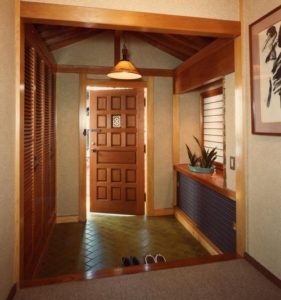
“Reality is the leading cause of stress for those in touch with it.”–Jane Wagner
Stress is like a shadow, following you wherever you go, until the source is blocked. Technology can exacerbate things, allowing work issues to shadow you around the clock. The result is that personal relationships can be neglected as your mind tries to put out fires—occupying itself with work issues while at home. Our instinct is to grapple with stress in order to resolve it, but at home this has the opposite effect—instead alleviating it, stress increases as personal time decreases. For example, thinking about work issues at bedtime makes you more tired and less able to deal with work the next day. More than ever, it is essential to create good boundaries so that work does not subtract from relationships. A good work-life balance can keep stress in check and restore harmony to your life. Key to this balance is transitioning from work to home.
Other cultures offer insight into how to create boundaries between the outer world of work and the inner world of close relationships. In ancient Rome, Janus, a two-faced figure, presided over doorways and transitions. His two faces signified the outward looking self when venturing to one’s place of business and the inward looking self on returning home. Stepping through the stone lintel of the doorway was a transition from one sphere to another. Roman homes did not directly open to the outside; they had a small passage-way, called the vestibulum, a corridor lined with mosaics, which opened to the rest of the house. This space further highlights the importance act of transitioning between places.
Japanese homes are also constructed with a transition space; they have a unique entrance, the Genkan, set lower than the rest of the house. The Genkan, built at ground level, serves as a demarcation between inner and outer, keeping shoes, dirt, and pests outside. In addition to being practical by helping keep homes clean, the Genkan serves as a place of transition. On returning home, you must pause, sit to take off your shoes, and then step up into the level of the inner house, separated from the entrance by a set of sliding doors. Often, there is also a small plant or art piece in the Genkan, further emphasizing the movement from outer to inner space.
The common thread from these images is that boundaries between work and home help us shift to the right archetypal perspective—that of the inner world of relationships. What can help create transitions is pairing deeply engrained habits, like taking off your shoes and crossing the entrance to your home, with de-stressing. Below are a few tips on how to do this. You can also adapt these ideas to a home-based business (the emotional shift from work to home is more important than a literal space).
Tips on Creating Boundaries and Dealing with Stress:
- Take off your “Stress Jacket”: As you hang up your jacket and take off your shoes, visualize taking off work issues too. Some people have a specific uniform they leave at work, a good place to leave work stress.
- Peel Off Stress in Layers: On your drive home, see yourself peeling work issues off, like taking off layers of shirts, opening your window, and leaving them on the road to decompose organically. On arriving home, there are no issues left to worry about.
- Stress Shower: A shower or bath relaxes the body and is a good example of a paired habit. See yourself washing stress away. It flows down the drain with the soap and dirt as you shower after work. You can also do this by washing your face.
- Erase Stress: Sit comfortably and breathe to the bottom of your lungs, feeling your diaphragm fully contract downwards. As you sit breathing, see the stressful situation in your mind. Shapes, colors, ideas are present as you create a physical image. Now, visualize a large eraser, and, starting at the top of your picture, carefully erase until it is gone. As the picture disappears, continue to focus on your breath, breathing deeply for another minute or two.
- Master Technology: Tech can be unforgiving; it does not know the difference between 15 minutes and 4 hours spent checking texts, but your relationships do. You have to create the boundary within which your tech exists, not the other way around. If you can, leave your smartphone at the entrance. Definitely don’t check texts in bed, while reading your kids bedtime stories, or when having snuggle time or a date. If you need to access your electronics at home, set a definite time and stick to it. Pair tech time with another habit and limit it to 15 or 30 minutes—checking email or texts after brushing your teeth, for instance. Useful too is turning off the sound to avoid checking texts every time you hear the “ding.”
- Healthy Habits are good for you and your relationships: being physically active, eating healthily, getting enough sleep, and being in touch with a spiritual system that you resonate with. Better yet, do these activities with your partner—dancing, cooking, yoga, hiking can be part of positive relationship time.
- Seek Professional Help: Everyone needs help from time to time. If your work-life balance feels like it is spinning out of control, talk to me about tools and strategies for doing things differently.
Creating a healthy work-life balance is not a one-off deal; you need to re-examine priorities as goals, work, and home life change. Establishing rituals for transitioning from work to home, and revisiting them from time to time, can help in being fully present in your relationships. And, it may just be easier to clean your floors when you leave shoes, and stress, outside.
